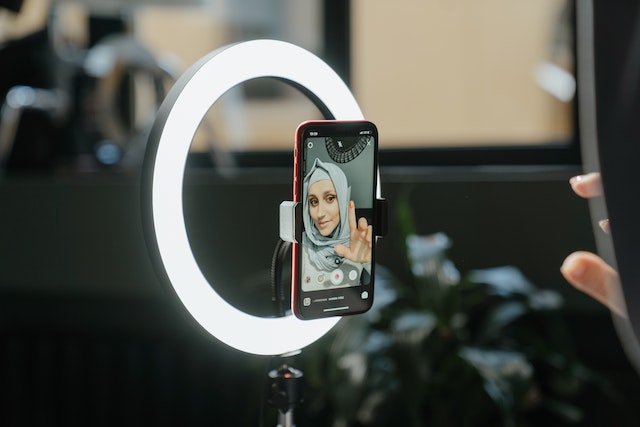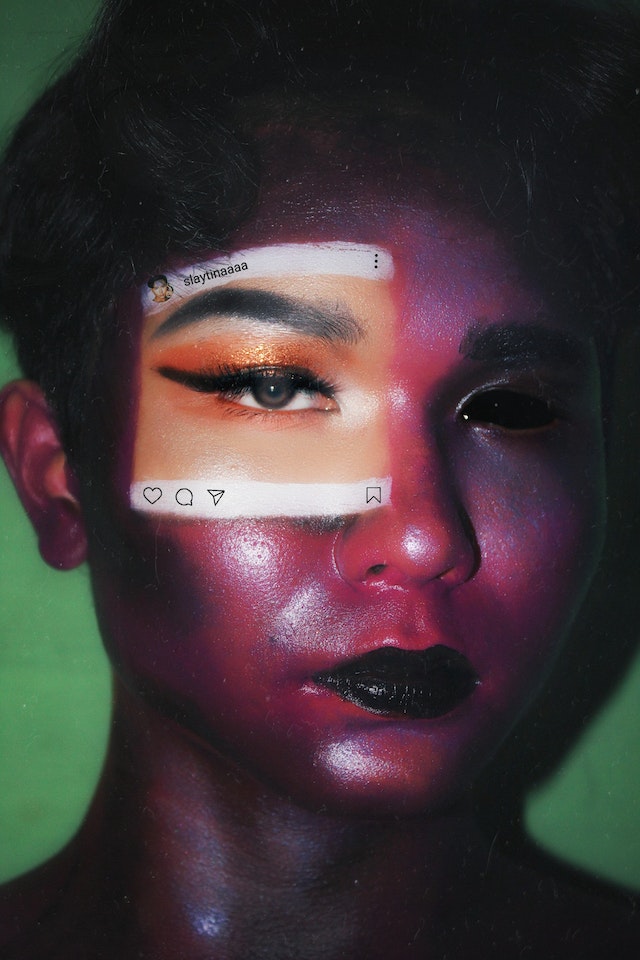UGC content is transforming the way brands communicate with their customers. Thanks to UGC, customers can take ownership of their product experience, share their stories, and connect with other customers on a deeper level. Brands can use UGC to enhance customer service, boost social media engagement, and create stronger relationships with their customers. It’s a mutually beneficial exchange that can result in a more positive customer experience — and more sales for your brand.
But.. what is UGC marketing? UGC marketing (also known as user-generated content marketing) is a strategy top marketers use, especially on platforms such as TikTok. It revolves around producing and publishing relatable content that is made by their target communities, or even creators that are a part of their target audience. Our TikTok agency’s marketing team partner brands with such creators to help them to reach their internal company goals – whether its a lower cost per install, an improved return on ad spend, or general awareness around their brand.
In this article, we’ll explore how to use UGC to your advantage and make it part of your marketing strategy.

What is UGC Content?
First, let’s break down what UGC content is. UGC stands for user-generated content and it is any piece of content created by a user or creator (not the brand itself). This can include product reviews, photos, videos, or any other content that is shared on social media. UGC is a powerful way for brands to connect with their customers on a more personal level. It’s an effective way of showcasing how end consumers are using the product or service.
But the key word here is “user-generated”. UGC is a form of content that customers have willingly created as an act of brand loyalty or appreciation. It’s an endorsement from the customer that they’ve created of their own accord. This makes it incredibly valuable to brands, as you can use it to build highly effective social proof and trust.
So, how exactly can brands leverage this seemingly spontaneous content within their marketing and product promotion strategy? There are a few key ways, which we will explore below.
How Can Brands Leverage UGC Content?
User-generated content is organic by definition. This means brands don’t have to pay for it — they simply need to be aware of it and nurture it. But before they can even do this, the content needs to exist in the first place. If you’re not paying creators to talk about your brand, then there must be some other kind of incentive.
Sometimes, your product is so amazing and innovative, that social media users want to shout about it from the rooftops. But even if your brand is not quite there yet, there are other ways to encourage consumer-generated content.
Encouraging User-generated Content
Here are some examples of ways to boost UGC content:
- Run social media contests. Encourage customers to engage with your brand on social media by running contests and giveaways. Ask them to post pictures or videos featuring your products, and reward them for doing so.
- Offer incentives. Offer incentives to customers in exchange for UGC. This could be in the form of discounts, free products, or exclusive access to events or promotions.
- Create hashtags. Create unique hashtags and let your customers know that you’d appreciate them tagging their posts with it. This will make it easier to find the content and repost it on your own social media channels.
- Encourage reviews. Ask customers to leave honest reviews of your product in the form of a social media post. This will help your product stand out from the competition and build trust with potential customers.
Once your customers start creating UGC, make sure it reaches the right audience and sparks further engagement.
Reaching the Right Audience
Here are a few tips on how to reach your target audience to drive even more engagement:
- Repost UGC on your own social media channels. Show your customers that you value their content by reposting it on your own social media channels. Make sure to give credit where credit is due and tag the user who created the content.
- Display UGC in your marketing materials. Showcase your customers’ content on your website, emails, and other marketing channels. This will help build trust and show potential customers that your product is being used in real life.
- Promote UGC via paid ads. Paid advertising is a great way to reach new audiences and increase your brand visibility. Utilise UGC content within your ads to capture the attention of potential customers and show off the success of your product.
But what if you try all of this and you still don’t have enough UGC content? Don’t panic — this is normal for new brands and products. If you need to generate more content, there is another option to explore. Enter the UGC creator — Gen Z’s answer to the modern-day influencer.
“There has been a measurable attitude shift that’s being felt across the marketing industry. Customers and brands alike are realising the importance of focusing on marketing that builds more genuine connection and credibility. Customers want to feel like they’re interacting with real people and not just buying products from faceless, impersonable corporations.”

What is a UGC Creator?
A UGC creator is someone who creates content specifically for the purpose of promoting a brand or product. Unlike influencers, who are chosen by brands for their large online following or “influence”, UGC creators are recruited for their creativity and ability to create high-quality content that resonates with the brand’s target audience.
Rather than paying influencers for a post, brands can opt to pay UGC creators for their time, effort, and skill. This is typically done in the form of a one-time fee. It can also be a commission based on the views and engagement of the content. The result is a much more cost-effective solution that still allows you to leverage the power of user-generated content without the usual trial and error.
Yes, this means the content is not technically “organic”. But when done right, it should still feel genuine and authentic. And authenticity is key when it comes to UGC marketing. There has been a measurable attitude shift that’s being felt across the marketing industry. Customers and brands alike are realising the importance of focusing on marketing that builds more genuine connection and credibility. Customers want to feel like they’re interacting with real people and not just buying products from faceless, impersonable corporations.
Authenticity is Key
This trend is not really surprising when you consider how synonymous social media has become with “fakeness” and “inauthenticity”. And perhaps, nothing screams “fake” these days more than a social media influencer. According to a 2021 survey by Nielsen, only 23% of consumers trust influencer ads. This isn’t great news for digital marketers. In a world of filters, deep fakes, and face swap apps, customers want to see something they can trust. And that’s the vibe that UGC creators provide.
They create content that blends seamlessly with other forms of user-generated content. The difference is, it’s been carefully crafted and strategically designed to promote a brand or product in an authentic way. It’s marketing, but it doesn’t feel like it. It feels like real content created by real people. This makes UGC creators a valuable resource for any brand that’s looking to tap into the power of consumer-generated marketing without wasting time trying to find the magic formula that will encourage users to start creating content on their own.
“Word-of-mouth recommendations from people that customers trust is one of the most powerful ways to sway consumer opinion. In fact, according to a survey by Nielsen, 88% of consumers trust peer recommendations. This makes it the most trusted form of advertising. UGC isn’t quite the same as word-of-mouth, but it’s one of the next best things. The statistics back this up, with 60% of consumers saying they trust UGC content.”

How Effective is UGC Marketing?
User-generated content is one of the most powerful tools in a marketer’s toolbox. When used correctly, it is a highly effective way to build trust and credibility with potential customers. But why does it work so well? According to a survey by TrustPilot, trust in social media advertising is already incredibly low. Just 15.9% of respondents state they trust targeted social media ads. Another survey conducted in the UK, put that figure as low as 6% for all forms of social media advertising. With this in mind, it’s clear that brands are working in a tough climate when it comes to trust and credibility.
This is where UGC content shines. Word-of-mouth recommendations from people that customers trust is one of the most powerful ways to sway consumer opinion. In fact, according to a survey by Nielsen, 88% of consumers trust peer recommendations. This makes it the most trusted form of advertising. UGC isn’t quite the same as word-of-mouth, but it’s one of the next best things. The statistics back this up, with 60% of consumers saying they trust UGC content.
Trust is one of the key elements that drives customer purchasing decisions. And it’s even more crucial in today’s environment, which is noticeably marked by an overall distrust in media. The 2022 Edelman Trust Barometer defines the current landscape as a “cycle of distrust”. Simply put, distrust in the media and institutions is at an all-time high. Breaking this cycle is a difficult task but UGC content is one way for brands to start building stronger connections with their customers.
Can UGC Marketing Drive Sales
Using user-generated content (UGC) can be an effective way for brands to drive sales, as it allows them to leverage the power of their customers to create authentic and engaging content that resonates with their audience. By featuring real customers using their products or services, brands can create a sense of trust and credibility with potential customers.
In addition, UGC can be an effective way for brands to reach new audiences, as users who create content featuring the brand’s products or services may have a larger social media following or may be more influential within a specific community. This can help the brand to reach a wider audience and potentially drive sales from new customers.
However, it’s important to note that UGC alone is not a guarantee of increased sales. Brands need to have a well-crafted marketing strategy that includes a variety of tactics and approaches in order to effectively drive sales. UGC can be a valuable component of a brand’s marketing efforts, but it should be used in conjunction with other tactics in order to be most effective.

Examples of Brands Using UGC to Engage with their Audience
Many brands are using user-generated content (UGC) on TikTok to engage with their audience and create a sense of community around their products or services. Here are a few examples of brands using UGC on TikTok:
- Nike: Nike encourages users to create content using the hashtag #justdoit, which is one of the brand’s most iconic slogans. Users can create videos showcasing their athletic achievements or simply showing off their Nike gear.
- Starbucks: Starbucks encourages users to create content using the hashtag #starbucksstories. Users can create videos showcasing their favorite Starbucks drinks or sharing their experiences at the coffee shop.
- Sephora: Sephora encourages users to create content using the hashtag #sephoraglowup. Users can create videos showcasing their skincare and makeup routines, using products from Sephora.
- Chipotle: Chipotle encourages users to create content using the hashtag #chipotlebowl. Users can create videos showcasing their favorite Chipotle meals or sharing their experiences at the restaurant.
To encourage users to create UGC, these brands often offer incentives such as discounts, free products, or the opportunity to be featured on the brand’s social media channels. By using UGC, brands can leverage the power of their customers to create authentic and engaging content that resonates with their audience.
Strengths and Weaknesses of UGC Marketing
Strengths of UGC
User-generated content marketing (UGC) has several strengths that make it an attractive marketing tactic for brands:
- Authenticity: UGC is created by real customers, which can help to create a sense of trust and credibility with potential customers. This can be particularly powerful in an era where consumers are increasingly skeptical of traditional advertising and marketing messages.
- Relevance: It is often more relevant to potential customers because it is created by individuals who are using the brand’s products or services in their everyday lives. This can make it more relatable and compelling to potential customers.
- Engagement: User-generated content marketing can be a powerful way for brands to engage with their customers and create a sense of community around their products or services. By encouraging users to create and share content featuring the brand, brands can create a two-way conversation with their audience and build loyalty.
- Reach: UGC has the potential to reach a wider audience, as users who create content featuring the brand’s products or services may have a larger social media following or may be more influential within a specific community.
Weaknesses of UGC
However, UGC also has some potential weaknesses that brands should be aware of:
- Lack of control: Brands have less control over the content that is created by users, which means that they may need to monitor and moderate UGC in order to ensure that it aligns with their brand values and messaging. However, by working with TikTok agencies and creators, you can strengthen the your ability to control the UGC output you get online.
- Lack of quality: Not all UGC will be of high quality, and brands may need to invest time and resources into curating and promoting the best content. However, you could encourage and incentivize high quality content by rewarding users for producing the best content.
- Legal issues: Brands need to be mindful of intellectual property and copyright laws when using UGC, as they may need to obtain permission from users before using their content.
- Time and resources: Creating and promoting UGC can be time-consuming and may require dedicated resources in order to be effective.

UGC Marketing – The Secret to Credibility
It’s tough out there for brands. Consumers are more sceptical of ads than ever before. It’s getting harder to break through the noise and capture their attention. That’s why it’s so important to focus on building credibility and trust with potential customers. And, as outlined above, one of the most effective ways to do that is through UGC content.
If you need help creating your UGC content strategy, House of Marketers has a team of experienced marketers that can help you get started. We understand the nuances of creating effective UGC content and we can connect you to some of the best UGC creators for your brand’s niche. Contact us today to learn more about how UGC can help you build credibility and trust with your customers.

House of Marketers (HOM) is a leading TikTok Marketing Agency. Our global agency was built by early TikTok Employees & TikTok Partners, which gives us the insider knowledge to help leading brands, like Redbull, Playtika, Badoo, and HelloFresh win on TikTok. Want us to convert more of Gen Z and Millennials with TikTok? Get in touch with our friendly team, here.